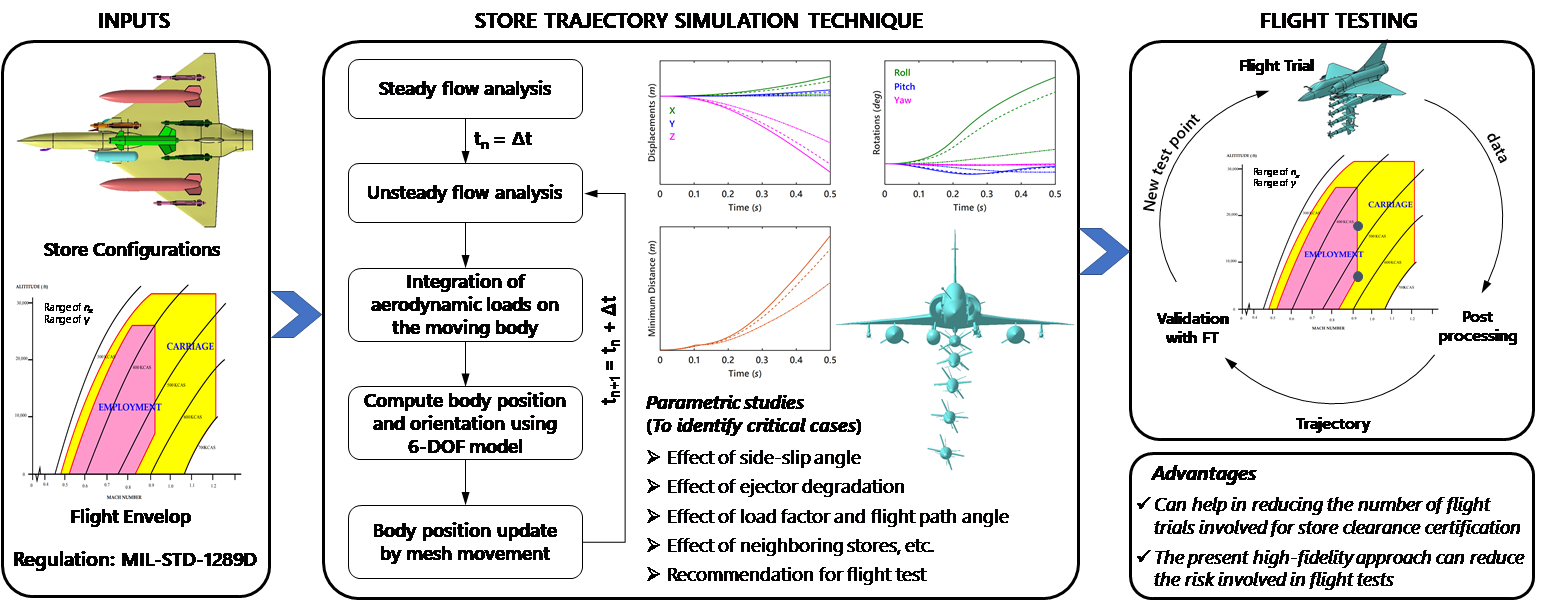
TRAJECTORY SIMULATION TECHNIQUE FOR INTEGRATION OF STORES ON AIRCRAFT
An approach for store trajectory simulation is developed by coupling rigid body motion (6DOF) solver and unsteady Euler CFD solver in conjunction with overset mesh algorithm in time domain. Here, the unsteady CFD solver calculates the unsteady fluid forces and moments on a store experiencing fluid-induced motion. The 6DOF equations calculates the motion of rigid body using the fluid forces, moments and gravitational forces acting on the store. The 6DOF solver in conjunction with moving or overset mesh allows the computational domain to move in any of the six possible degrees of freedom and the simulation of rigid body motion in a fully-coupled manner with the flow solver. Further, these trajectories information are used to calculate the minimum distance between the moving store and any point on the aircraft. Here, simulations are performed at various critical launch points (at high and low dynamic pressures) in the proposed envelope to study the safe release of stores from the aircraft. Various parametric studies are also conducted to study the influence of neighboring stores, low and high g maneuver, side slip angles, degraded ejection system and ERU setting on the trajectory of stores. The clearance of the proposed envelopes of stores is based on the motions of the store away from the A/C boundary and the minimum distance between the store and the A/C. The critical configurations for which store shows significant motions in the proximity of aircraft and has no sufficient margin in the minimum distance between the store and the A/C, are also identified. For such cases, further investigation on the separation of stores are recommended through flight tests. Based on the comparison with flight test data, trajectory simulations are fine-tuned and final envelopes for various store configurations are proposed.

 English
English हिन्दी
हिन्दी